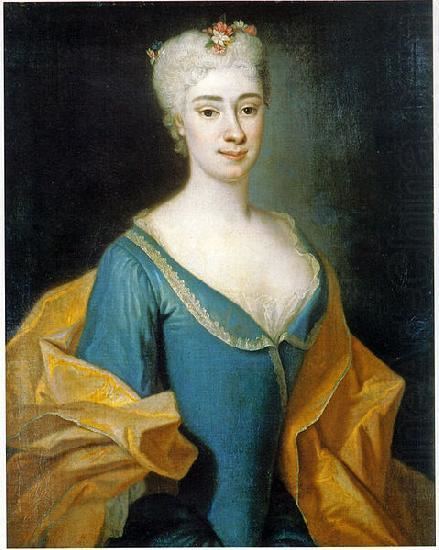Name Louis Silvestre | ||
 | ||
Similar People Augustus II the Strong, Augustus III of Poland, Anna Karolina Orzelska, Christiane Eberhardine of Brande, John George III - Elector of | ||
Louis de Silvestre (23 June 1675 – 11 April 1760) was a French portrait and history painter. He was court painter to King Augustus II of Poland, and director of the Royal Academy of Arts in Dresden.
Contents
Life and work
Sylvestre was born in Sceaux, south of Paris, the third son of Israel Silvestre, the notable engraver and drawing-master to the Grand Dauphin himself. Louis was taught initially by his father, then trained under Charles Le Brun and Bon Boullogne; he completed his studies in Rome, where he met Carlo Maratta, whose work had a great influence on him.
After his return to Paris, Sylvester entered the Academie de peinture et de sculpture in 1702 and was appointed professor in 1706. The main works he painted at this time were The Healing of the paralytic at the door of the Temple (1703) and the portrait of Louis XV (1715).
Friedrich August II, the prince-elector of Saxony, met Silvestre when he was in France and offered him the chance to work at the court of his father Augustus II, King of Poland. The artist accepted the offer, obtained permission from Louis XV, and set off on April 23, 1716; by 1718 he was living in Dresden. Both Augustus II and his son were great admirers of Silvestre's work, and bestowed upon him, in the space of thirty years, every honour imaginable: he was appointed first court painter, then, in 1727, director of the Royal Academy of Arts; he was ennobled in 1741, as was his brother Charles-Francois.
During this period, Silvestre completed, with the help of his wife, Mary Catherine Herault, many oil paintings and frescos, either in Dresden or in Warsaw. He painted many portraits of the King and Queen, as well as those of other leading aristocrats. He was responsible for the most important works in the Palace of Dresden, notably, subjects drawn from Ovid's Metamorphoses for several ceremonial bedrooms and several ceilings. On the death of Heinrich Christian Fehling (1654–1725), Silvestre was made Director of the Art Academy in Dresden.
During the time he remained at the court of Dresden, Silvestre was known as much for his personality and his distinguished friends, as by his artistic talents. The great number of works that came from his brush and the generosity of his patrons allowed him to amass a considerable fortune, and, having achieved financial security, he retired and returned to France. Louis XV awarded him a pension of 1000 crowns and apartments in the Palais du Louvre itself. In 1752 he was appointed director of the Academy of Paris.
Louis de Silvestre died in Paris at the Palais du Louvre on 11 April 1760.
"As for art", says Mariette, "he was not a painter without merit, but his style had nothing that was new or too exciting; one saw only in him a good follower of Bon Boulogne."
Amongst Silvestre's students was the painter Jean-Eleazar Schenau, who later became director of the Dresden Academy and of the Meissen porcelain factory.
